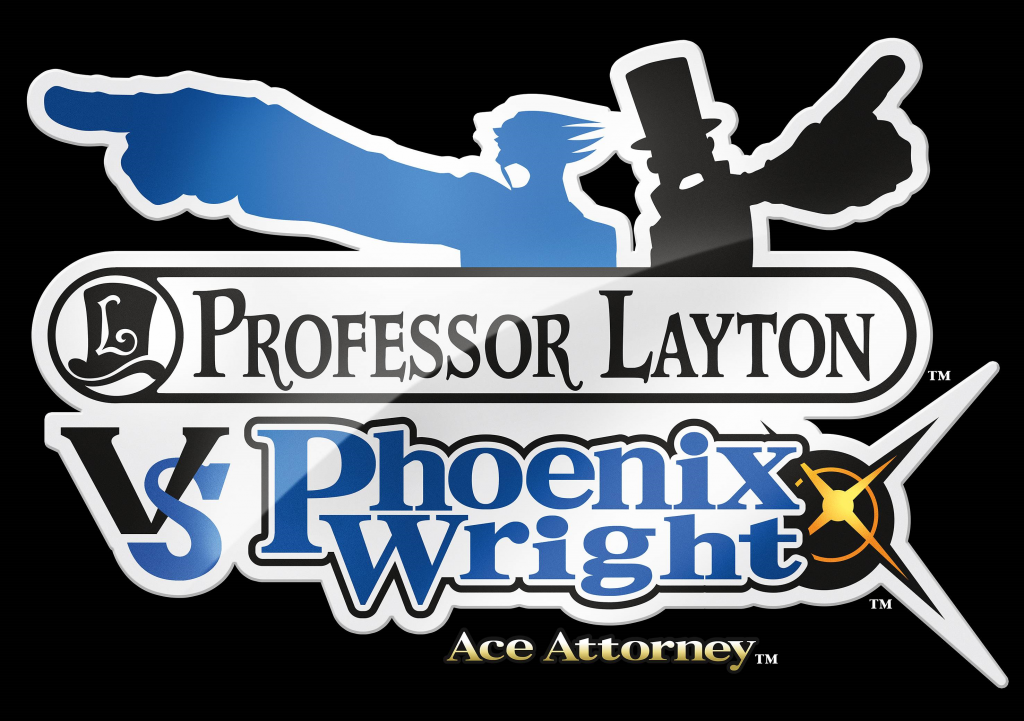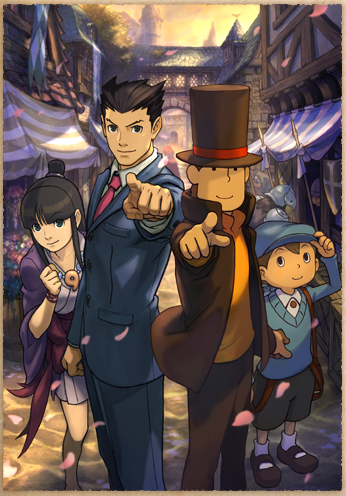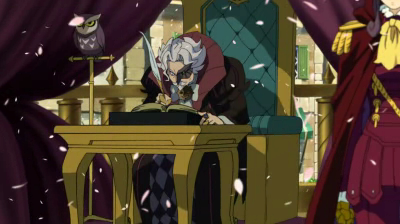Crossover games outside the fighting genre are a rarity these days, so when a crossover between two of the more cerebral franchises out there–Professor Layton and Ace Attorney–was announced in 2012, it turned a few heads, especially given that the Venn diagram between their two fan bases is almost a circle. Alas, the companies involved showed no immediate interest in localizing it outside of Japan. Fans in the United States were stuck waiting for the hypothetical someday when the game would be released in English. Now, someday has come. Professor Layton vs. Phoenix Wright: Ace Attorney has been localized, digitally released, and ready for American consumption… or at least Western consumption, because all of the words use British spelling and Luke is voiced by a different voice actor.
The verdict: While far from the best either franchise has to offer, Professor Layton vs. Phoenix Wright: Ace Attorney is a charming game that will please fans of both franchises.
Despite the “vs.” in the title, Layton and Wright spend most of the game pooling their resources. Consider the “vs.” less of a confrontation and more of a mash-up. I’m uncertain how this fits into either the Professor Layton or Ace Attorney franchise canons, but I’m going to assume the correct answer is “not in any way shape or form.”
The gameplay of both franchises is integrated seamlessly. For the most part, it alternates between Layton‘s puzzle-based investigation and Ace Attorney‘s trials. The gameplay is mostly identical to the respective franchises: the Layton-based stages involve solving puzzles and gathering clues, while the Ace Attorney stages follow the same trial-press-object gameplay.
Hint coins gathered during the exploration segments can be used during trials to highlight important pieces of testimony or the correct pieces of evidence.
The story follows stars of both franchises, Layton and Luke from Layton, and Phoenix and Maya from AA. Each party arrives separately in the mysterious town of Labyrinthia, a town seemingly out of the middle ages, full of knights, bards, and the bane of the entire town: witches. The use of magic, or simply being a witch, is a crime punishable by a fiery death, and the town has literal witch trials to determine culpability. The town is run by a cryptic man named The Storyteller. The townspeople believe that everything he writes comes true, and anyone who believes differently is suspect. Wright, Maya, Layton, and Luke team up to find the truth about Labyrinthia and the mysterious resident Espella.
Gameplay aside, the narrative is an ideal set up for all parties involved: Labyrinthia is neutral for both franchises, which prevents a one franchise from invading the other’s world and puts them on equal footing. Mysterious towns are kind of Layton’s Thing With A Capital T, and trials are the whole point of Ace Attorney. The chemistry between all of the characters is completely natural. The secondary characters in the story are solid as well, including the enigmatic but charming Espella and knightly prosecutor Inquisitor Barnham. A disappointing byproduct of the neutral setting is (other than a few cameos) the lack of other recurring characters from each franchise, but it’s an acceptible drawback.
Though the game itself is a delight, it can get dark at times, especially during the trials. Both Professor Layton and Ace Attorney are known for pulling at heartstrings, but the conclusions of some trials are just emotionally brutal. That said, it always feels in line with the story and is never superfluous.
One of the best gameplay additions is the ability to walk to any location on the map. Players no longer need go through every individual location, instead they can now pick any point on the map and run right there with a click. This saves an enormous amount of time, especially when looking for hint coins or hidden puzzles.
It’s delightful to see Maya as a full character for the first time since 2007 (her appearance in Dual Destinies DLC doesn’t really count), but it’s hard to shake the feeling that she’s out of place after doing little more than cameos for seven years. It’s almost like visiting a friend you haven’t seen for years who hasn’t changed a bit despite the fact that you have. Given the fact that we might not ever see her in a lead role again, though, don’t take it for granted; she’s exactly as you remember, even if she never uses her spirit medium powers.
The trials include a new mechanic: mob trials. Occasionally multiple witnesses take the stand at the same time and are interrogated as one long testimony. When pressing witnesses, one witness will occasionally react to the other’s statement. When this happens, Wright can question that witness, which will often yield new information. It’s a bit chaotic at first, but easy to adapt to. It’s an interesting gimmick and it fits excellently in tone with the medieval setting.
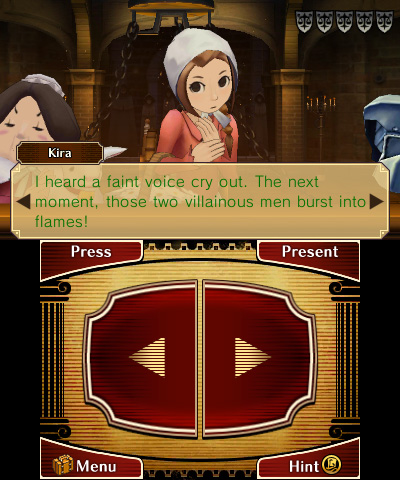
A mob trial in action. The hyperbole you see here is integrated well into the storyline – it is, after all, a town full of people who love the spectacle of a good witch trial.
After beating the game, the player gets access to bonus features, including a delightful “one year later” episodic storyline that grinds the fourth wall into dust and explains some plot points left unanswered.
The music for the game is a solid, seamless mix of Professor Layton and Ace Attorney. The trial music, while mostly new, incorporates many of Ace Attorney‘s classic motifs, and draws heavily on the iconic soundtrack of the first game. During the exploration segments, the music is Classic Layton.
All of that said, the game is far from immune to criticism. Neither the puzzles nor the court cases are ever likely to be listed among franchise bests. Even by Ace Attorney standards, the cases go to ludicrous lengths and have few scenarios in which the correct answer is too much of a headscratcher. The last trial in particular has some moments that they’re hard to buy even in the weird context of Labyrinthia. While the puzzles are decent, it’s similarly unlikely that any of them will ever be ranked among the great Layton puzzles, and occasionally come with less-than-adequate instructions. There are fewer than seventy puzzles in the main game and, while the small size is understandable given the gameplay, it feels like there should have been more. There are also no minigames, so once the main quest and puzzles are solved, there’s not a lot to keep you playing. It’s already a long game (somewhere in the neighborhood of twenty-five hours) but it’s still shorter than what fans have come to expect from either series.
As noted earlier, this game was originally released in Japan in November 2012. It’s likely that if they localized it a year or so earlier, the game would have felt more groundbreaking. It was the first time that voice acting, cutscenes, or 3D character models were used in an Ace Attorney property. Last year’s release of Dual Destinies takes the air out of that, even if interjections from every character get actual voice acting in this game.
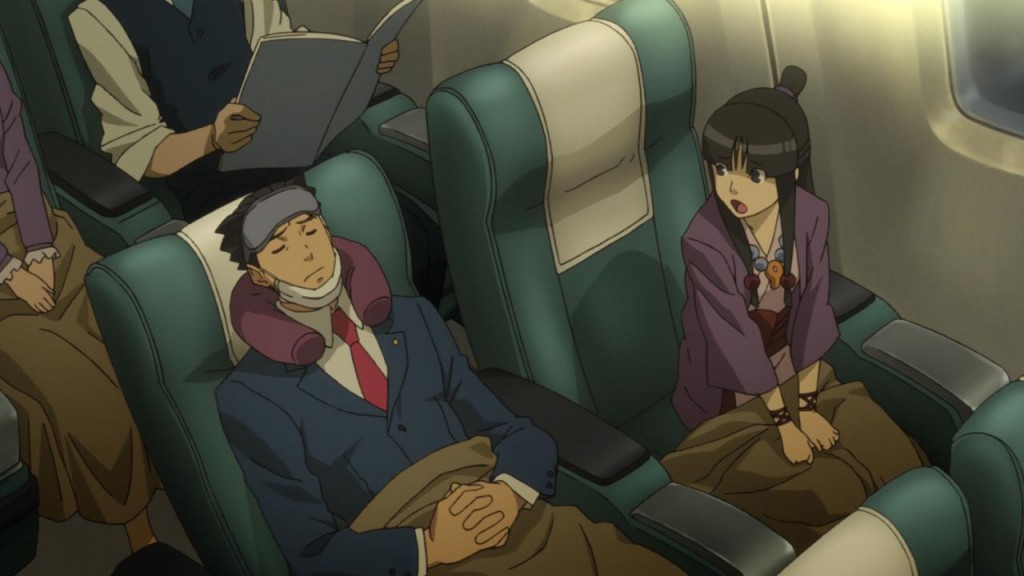
Part of the first cutscene featuring Nick and Maya, seen here flying into London. It’s a cute scene but would have been groundbreaking to American eyes if we saw it two years ago.
While the game’s narrative makes sense, it feels like it never reaches its full potential. While side characters are often the more distinguished parts of both franchises, they’re frequently ignored or simply vanish after trials in this game. One promising new character who is introduced at the start of the game is mentioned as a plot point, but never actually appears again after the prologue. There are also a few moments that feel ever so slightly out of character. A few times during the trails, for example, Layton tries to pass the buck to Wright on minor screw up, something a gentleman of his stature would never do. There’s also a moment in the final cinematic that, while it doesn’t ruin the story, contradicts an important plot point regard character behaviors. (It’s hard to say without spoiling.)
It is also impossible to go back and play through any individual courtroom case without restarting the whole game, or some clever saving.
Even with these flaws, PLvsPW:AA still a blast to play. The characters are right, the gameplay is solid, and it feels loyal to both franchises. A gentleman wouldn’t pass up this chance.
Professor Layton vs. Phoenix Wright: Ace Attorney is available via the Nintendo eShop for the 3DS. It’s a space hog, so get yourself a new SD card first.

